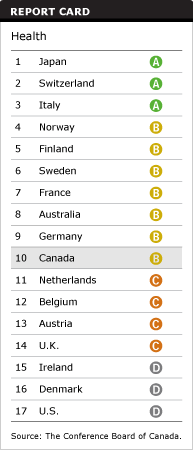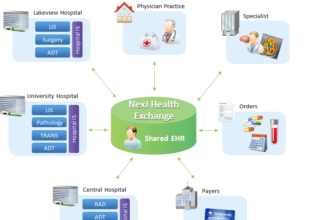If you just joined us here in the United States and watched the recent Presidential debate, you would get the idea that cutting or shifting health care costs would fix the system, this is not true.
If you just joined us here in the United States and watched the recent Presidential debate, you would get the idea that cutting or shifting health care costs would fix the system, this is not true.
The Health Care Elephant:
Both candidates either avoided or just didn’t see the health care elephant in the room, which is that rising costs are a direct result in the rise of chronically ill people. Experts will try to convince you that the problem is more complex than this, but it’s not. A focus on spending cuts treats the symptom not the underlying problem of rising costs. I reviewed the debate video to make sure, and not a single word was mentioned about chronic illness.
Let me be very clear on this point: Suggesting that shifting costs or paying less for the same service is like declaring that you will pay your outrageous monthly credit card bill with money from one of your other accounts and this payment will be 10% less than you would normally pay, meanwhile you are still racking up new charges for your latest “must have” purchases. This was the essence of what both candidates said in the debate.
Attention Employers: We Now Know Who and How Much:
According to a 2011 Society of Actuaries (SOA) report up to 90% of all corporate health care spending is totally preventable. The report states that companies are wasting spending an extra $300 billion each year on health care costs related to overweight and obese workers. For the first time ever we now know who in the population is driving up health care costs, and again for the first time ever the SOA tells us exactly how much extra this population is costing US employers ($300 billion a year). These costs are totally preventable with lifestyle changes that include weight loss.
Obesity is associated with 39 million lost work days, 239 million restricted-activity days, 90 million bed days and 63 million physician visits per year. Source: Alere publication
Life expectancy is up and the percentage of Americans who are over 65 years is increasing. As our population ages so do chronic illnesses and thus medical expenses rise.
- The United States contains more people age 65 and older than the total population of Canada.
- Americans aged 65 and older outnumber the combined populations of New York, London, and Moscow.
- In 2010, Baby Boomers began reaching age 65, swelling the 65 and over population in the United States from 13.0 to 20.0 percent by the year 2050.
- America’s elderly population is expected to reach 72 million by 2030, more than double the number in 2000.
New Technology:
Technology advances have allowed people to live longer with their chronic illnesses which in turn drives up costs. Sixty years ago we spent very little on cancer, diabetes, heart disease or infections. We spent little because we had no treatments to offer. In 2012, prescription drug therapies, scans, MRIs, transplants, chemotherapy, joint replacements, heart bypasses are now common procedures. Sixty years ago health care was inexpensive because we did not have the technology to treat illnesses.
Chronic illnesses are diseases of long duration and generally slow progression with little or no effective cure. Chronic illnesses, such as Obesity, heart disease, stroke, cancer, chronic respiratory diseases and diabetes are by far the leading causes of mortality in the world, representing 63% of all deaths. Source: World Health Organization
What Causes Chronic Illnesses: Lifestyle vs. Capricious Misfortune:
The leading cause of chronic illness is lifestyle. Yes, even some cancers are linked to lifestyle factors such as Obesity. While there are some that argue that genetics are the cause, we now know that genes are latent carriers of information. This information becomes activated by stress and is related to specific behaviors i.e. lifestyles. Thus, even if one has the gene for obesity, one can avoid become obese by a lifestyle that includes regular exercise and a low calorie diet. Source: CDC
- 32% of U.S. Infants Are Obese or At Risk for Obesity
- 20% of all children are Obese
- Obese youths are more likely to have risk factors for cardiovascular disease, such as high cholesterol or high blood pressure.
- In a population-based sample of 5 to 17-year-olds, 70% of Obese youths had at least one risk factor for cardiovascular disease.
- Children and adolescents who are obese are likely to be obese as adults and are therefore more at risk for adult health problems such as heart disease, type 2 diabetes, stroke, several types of cancer, and osteoarthritis.
- One study showed that children who became obese as early as age 2 were more likely to be obese as adults.
Chronic Illness Road Map:
- One day you wake up and realize that you put on a few extra pounds.
- You join a gym, try a few diets but still seem to be gaining weight.
- As we grow older the demands of life, job, stress, family, etc. chip away at our time to exercise and ability to consume healthy rational meals .
- An annual doctor’s visit reveals that you are clinically overweight and fast approaching the Obese category. A blood sugar test reveals that you are prediabetic.
- “Not Me! The test is wrong”: This is the most common response.
- Statistically within in 24 months from becoming clinically overweight (A BMI above 24.9) and without a specific customized lifestyle modification plan (not a pill) you will become obese (BMI of 30+).
- Chronic Illness #1: Statistically within 24 to 60 months after becoming Obese you will become prediabetic or type 2 diabetic.
- Chronic Illness #2: Now that you are Obese, statistically you are now more likely to have some type of cardiovascular disease.
- Chronic Illness #3: Now that you are Obese, statistically you are more likely to have some type of chronic join pain or injury as your joints were not made to support the amount of stress your excess weight has placed on them.
- 1 out of every 2 American adults has at least one chronic illness.
- A chronically ill person’s life revolves around costly disease management.
Following the Money
Test, Cut, Burn or Medicate; Practicing Medicine vs. Health
 Many health practitioners feel trapped in a medical system that only compensates them if they test, operate or medicate. The entire system, from education to medication and everyplace in between has evolved based on this specific payment system.Yet, the vast majority of illnesses that practitioners are treating are chronic illnesses that are only effectively managed with lifestyle intervention (per the CDC, NIH, et. al).
Many health practitioners feel trapped in a medical system that only compensates them if they test, operate or medicate. The entire system, from education to medication and everyplace in between has evolved based on this specific payment system.Yet, the vast majority of illnesses that practitioners are treating are chronic illnesses that are only effectively managed with lifestyle intervention (per the CDC, NIH, et. al). Make no mistake about it, chronic illness is big business and for a price, drug manufactures and or a highly skilled surgeon can mitigate decades of poor lifestyle choices. Keep in mind that the chronic illness will not go away, but the triple bypass intervention did save your life, a good outcome right? Successful health care is measured in “outcomes”. Health care outcomes are changes in health status, usually due to an intervention. Achieving good patient health outcomes is the fundamental purpose of health care.
In many cases the intervention that created the “successful outcome” was the inevitable result of the progression of a chronic illness known to health professionals for years yet without an effective means or incentives to treat it. If the patient survives the surgery without any major surgical complications, then we deem this a “successful outcome”.Perhaps, you can see why many in the health profession are frustrated. As the chart to the right indicates, even with all our health care spending it’s not resulting in better outcomes. This is a failure of the system not the practitioner.
Cutting costs either by paying less for services or realizing economies of scale for drug purchases (both part of the current plan) will not reduce chronic illness, the real driver of cost. Cutting costs can be best achieved by a combination of education, supply side approaches and a strong commitment to prevention programs. While there are provisions for prevention in the new health care act, they are by no means strong enough to reduce the increases in chronic illnesses and thus escalating health care costs.
Fact is that it’s our own personal responsibility to educate ourselves on health risks and to choose lifestyles that promote ideal long term health. Below are some simple tips for employers and individuals to achieve this end.
1. Investigate self funding vs. fully insured health insurance options to learn which case allows for greater flexibility and possible cost savings.
2. Seek out and align prevention programs with corporate objectives:
There are many prevention and workplace wellness programs in today’s marketplace some of which can be customized to meet your organizations objectives. Weight loss and obesity prevention programs offer by far the largest return on investment.
3. Declare a Corporate Culture of Health and Wellness:
A culture is the result of lifestyles, if your company’s leadership declares it AND lives it, then your organization will follow.
4. Recognize and Reward Prevention:
No need for expensive awards, simple individual recognition of a commitment to personal wellness and disease prevention goes a long way. Prevention rewards like paid vacation days or even leaving work a few hours early on a Friday are low cost incentives and offer real currency to employees.
5. Walking the Walk: Avoid sponsoring unhealthy lunches/snack/breakfast and replace them with small healthy meals. Allow for 30 minutes of physical active breaks daily.
1. Avoid consuming high fructose corn syrup and you will shed close to 5 lbs a year.
2. Know how many calories a day you can consume without gaining weight (your BMR).
3. Keep track of how many calories a day you consume and learn your personal formula of how to net burn 3500 calories (1 pound).
4. Consume anti-inflammatory foods multiple times a day, such as green leafy vegetables, whole fruits, garlic, ginger and replace sugar with cinnamon.
5. Drink only water vs. soda, fruit juice, etc. for at least 30 days as see the difference in your weight, skin tone and energy levels.







